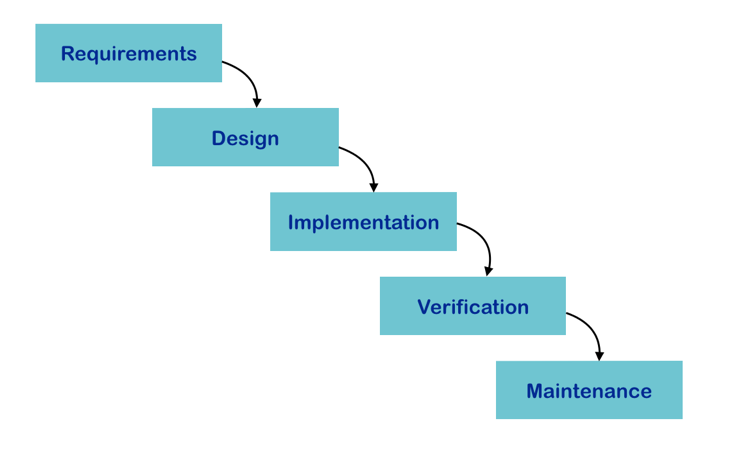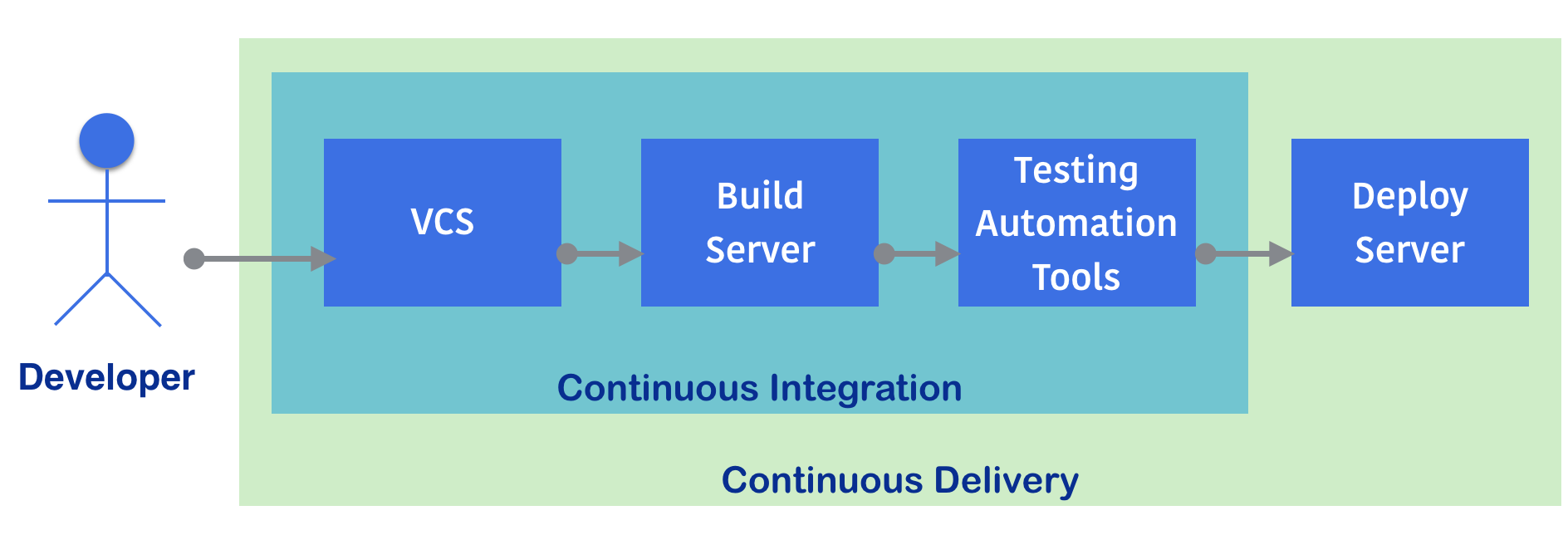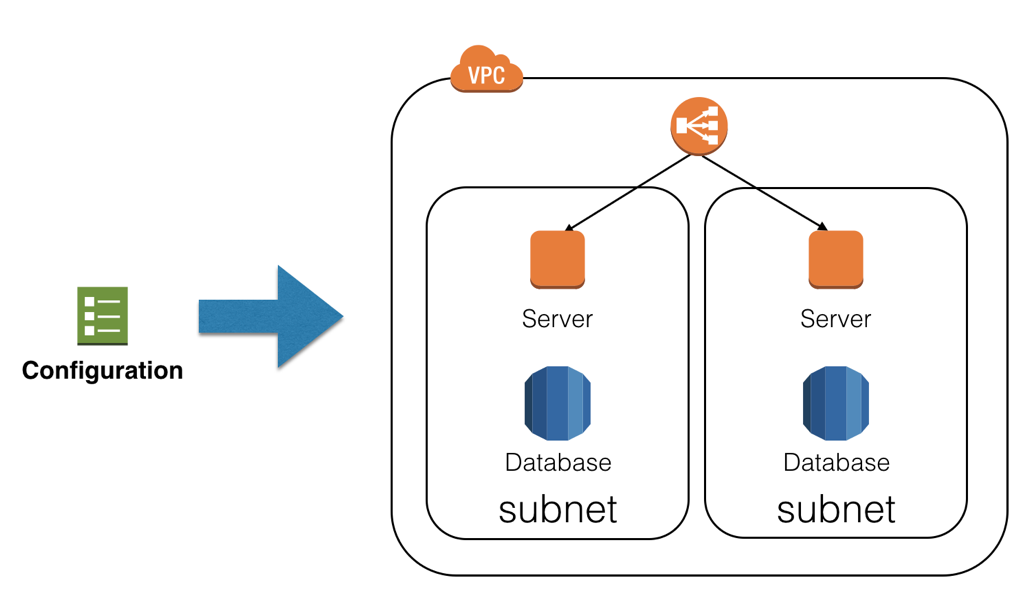Building a computer application and delivering it to the customer has been discussed and has evolved over time. It is related to Software Development Life Cycle (SDLC); there are several types of processes, methodologies, and histories. In this section, we will describe its evolution.
Software delivery challenges
Waterfall and physical delivery
Back in the 1990s, software delivery was adopted by a physical method, such as a floppy disk or a CD-ROM. Therefore, SDLC was a very long-term schedule, because it was not easy to (re)deliver to the customer.
At that moment, a major software development methodology was a waterfall model, which has requirements/design/implementation/verification/maintenance phases as shown in the following diagram:

In this case, we can't go back to the previous phase. For example, after starting or finishing the Implementation phase, it is not acceptable to go back to the Design phase (to find a technical expandability issue, for example). This is because it will impact the overall schedule and cost. The project tends to proceed and complete to release, then it goes to the next release cycle including a new design.
It perfectly matches the physical software delivery because it needs to coordinate with logistics management that press and deliver the floppy/CD-ROM to the user. Waterfall model and physical delivery used to take a year to several years.
Agile and electrical delivery
A few years later, the internet became widely accepted, and then software delivery method also changed from physical to electrical, such as online download. Therefore, many software companies (also known as dot-com companies) tried to figure out how to shorten the SDLC process in order to deliver the software that can beat the competitors.
Many developers started to adopt new methodologies such as incremental, iterative, or agile models and then deliver to the customer faster. Even if new bugs are found, it is now easier to update and deliver to the customer as a patch by electrical delivery. Microsoft Windows update was also introduced since Windows 98.
In this case, the software developer writes only a small logic or module, instead of the entire application in one shot. Then, it delivers to the QA, and then the developer continues to add a new module and finally delivers it to the QA again.
When the desired modules or functions are ready, it will be released as shown in the following diagram:

This model makes the SDLC cycle and the software delivery faster and also easy to be adjust during the process, because the cycle is from a few weeks to a few months which is small enough to make a quick adjustment.
Although this model is currently favoured by the majority, at that moment, application software delivery meant software binary, such as EXE program which is designed to be installed and run on the customer's PC. On the other hand, the infrastructure (such as server and network) is very static and set up beforehand. Therefore, SDLC doesn't tend to include these infrastructures in the scope yet.
Software delivery on the cloud
A few years later, smartphones (such as iPhone) and wireless technology (such as Wi-Fi and 4G network) became widely accepted, and software application also changed from binary to the online service. The web browser is the interface of the application software, which need not be installed anymore. On the other hand, infrastructure becomes dynamic, since the application requirement keeps changing and the capacity needs to grow as well.
Virtualization technology and Software Defined Network (SDN) make the server machine dynamic. Now, cloud services such as Amazon Web Services (AWS) and Google Cloud Platform (GCP) can be easy to create and manage dynamic infrastructures.
Now, infrastructure is one of the important components and being within a scope of Software Development Delivery Cycle, because the application is installed and runs on the server side, rather than a client PC. Therefore, software and service delivery cycle takes between a few days to a few weeks.
Continuous Integration
As discussed previously, the surrounding software delivery environment keeps changing; however, the delivery cycle is getting shorter and shorter. In order to achieve rapid delivery with higher quality, the developer and QA start to adopt some automation technologies. One of the popular automation technologies is Continuous Integration (CI). CI contains some combination of tools, such as Version Control Systems (VCS), build server, and testing automation tools.
VCS helps the developer to maintain program source code onto the central server. It prevents overwriting or conflict with other developers' code and also preserves the history. Therefore, it makes it easier to keep the source code consistent and deliver to the next cycle.
The same as VCS, there is a centralized build servers that connects VCS to retrieve the source code periodically or automatically when the developer updates the code to VCS, and then trigger a new build. If the build fails, it notifies the developer in a timely manner. Therefore, it helps the developer when someone commits the broken code into the VCS.
Testing automation tools are also integrated with build server that invoke the unit test program after the build succeeds, then notifies the result to the developer and QA. It helps to identify when somebody writes a buggy code and stores to VCS.
The entire flow of CI is as shown in the following diagram:

CI helps both the developer and the QA not only to increase the quality, but also to shorten archiving an application or module package cycle. In an age of electrical delivery to the customer, CI is more than enough. However, because delivery to the customer means to deploy to the server.
Continuous Delivery
CI plus deployment automation is the ideal process for the server application to provide a service to customers. However, there are some technical challenges that need to be resolved. How to deliver a software to the server? How to gracefully shutdown the existing application? How to replace and rollback the application? How to upgrade or replace if the system library also needs to change? How to modify the user and group settings in OS if needed? and so on.
Because the infrastructure includes the server and network, it all depends on an environment such as Dev/QA/staging/production. Each environment has different server configuration and IP address.
Continuous Delivery (CD) is a practice that could be achieved; it is a combination of CI tool, configuration management tool, and orchestration tool:

Configuration management
The configuration management tool helps to configure an OS including the user, group, and system libraries, and also manages multiple servers that keep consistent with the desired state or configuration if we replace the server.
It is not a scripting language, because scripting language performs to execute a command based on the script line by line. If we execute the script twice, it may cause some error, for example, attempt to create the same user twice. On the other hand, configuration management looks at the state, so if user is created already, the configuration management tool doesn't do anything. But if we delete a user accidentally or intentionally, the configuration management tool will create the user again.
It also supports to deploy or install your application to the server. Because if you tell the configuration management tool to download your application, then set it up and run the application, it tries to do so.
In addition, if you tell the configuration management tool to shut down your application, then download and replace to a new package if available, and then restart the application, it keeps up to date with the latest version.
Of course, some of the users want to update the application only when it is required, such as blue-green deployments. The configuration management tool allows you to trigger to execute manually too.
Infrastructure as code
The configuration management tool supports not only OS or Virtual Machine, but also cloud infrastructure. If you need to create and configure a network, storage, and Virtual Machine on the cloud, it requires some of the cloud operations.
But the configuration management tool helps to automate the setup cloud infrastructure by configuration file, as shown in the following diagram:

Configuration management has some advantage against maintaining an operation manual Standard Operation Procedure (SOP). For example, maintaining a configuration file using VCS such as Git, you can trace the history of how the environment setting has changed.
It is also easy to duplicate the environment. For example, you need an additional environment on cloud. If you follow the traditional approach, (that is, to read the SOP document to operate the cloud), it always has a potential human error and operation error. On the other hand, we can execute the configuration management tool that creates an environment on cloud quickly and automatically.
Orchestration
The orchestration tool is also categorized as one of the configuration management tools. However its more intelligent and dynamic when configuring and allocating the cloud resources. For example, orchestration tool manages several server resources and networks, and then when the administrator wants to increase the application instances, orchestration tool can determine an available server and then deploy and configure the application and network automatically.
Although orchestration tool is beyond the SDLC, it helps Continuous Delivery when it needs to scale the application and refactor the infrastructure resource.
Overall, the SDLC has been evolved to achieve rapid delivery by several processes, tools, and methodologies. Eventually, software (service) delivery takes anywhere from a few hours to a day. While at the same time, software architecture and design has also evolved to achieve large and rich applications.



